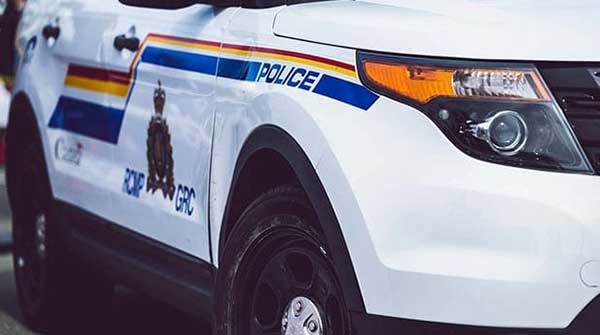 Police services are once again hard at work preparing annual budget submissions for the next fiscal year. The cost of policing continues to mount year after year, and the justifications seem to repeat year to year as well.
Police services are once again hard at work preparing annual budget submissions for the next fiscal year. The cost of policing continues to mount year after year, and the justifications seem to repeat year to year as well.
The budget for Canada’s largest municipal police force, the Toronto Police Service (TPS) now exceeds $1.2 billion, a $30-million increase in 2019 alone. Nearly a quarter of the city’s tax revenues (23.29 per cent) went towards policing in 2019.
Lets see what this $1.2-billion budget gets a Toronto taxpayer.
The city’s 2020 budget notes list the following challenges confronting TPS as reasons for its budget submissions to the city:
- Major crime is up. The service uses major crime indicators as a measure of how safe the city is. This impacts quality of life, entertainment, economic development, business investment and tourism. From 2015 to 2018 all major crimes increased with the most notable increases seen in homicide (62.7 per cent), auto theft (45.7 per cent) and theft over $5,000. In 2019, there were increases in major crime areas of assault, break and enter, auto theft and theft over $5,000. All of these increases are driving workload demands through increased calls for service.
- More shootings. Incidents were up 48.6 per cent from 2015 to 2018. Victims of shootings have increased by 46.6 per cent. In 2019, shooting incidents grew by 16.4 per cent and shooting victims by 22.7 per cent. These calls are a public safety concern and put pressure on resources.
- Complexity of calls for service are driving the time spent on calls up. There was a 2.5 per cent increase in the average time spent on calls in 2018 from 2015.
- Legislative impacts have increased. Costs and resource pressures associated with legislation impacting the service relating to workers’ compensation, chronic mental stress policy, cannabis legalization, next-generation 911, and the increased disclosure of 911 tapes.
- Calls for service went up overall by 7.5 per cent from 2015 to 2018, with emergency calls up by over 10 per cent and non-emergency calls up four per cent. While calls have been increasing, the number of officers declined by almost 500 over the same period, creating a substantial increase in the number of calls per officer.
- Significant increases have been seen in calls involving persons in crisis, overdoses and threats of suicide. These calls require more time, given their complex nature.
These are the typical claims, tested and tried to resist political scrutiny. They continue to fleece the public of its tax dollars and siphon productivity and potential from other social and public services.
The fact that major crimes increased between 2015 and 2018, and shootings are up is a failure of police leaders to anticipate, mitigate, and respond to emerging and predictable risks. It should not be a justification for additional resources and raises in salaries and bonuses.
This is a public admission of the failure of command.
According to Ontario Public Sector Salary Disclosure 2018, the top senior officers at the TPS (six command officers, six staff superintendents, and 20 superintendents alone) earned $6,256,787 in 2018. Several senior officers received more than $16,000 in benefits in addition to their salaries. This doesn’t include senior officers holding the rank of inspector or acting inspector. Benefits alone amount to more than the annual income of thousands of the city’s residents.
The fact that calls for services take longer, that processes have become more time consuming and complex is a failure of police leaders. This is an indictment of their failure to use technology effectively, of having wasted tens of millions of dollars of taxpayer contributions on computerization without any reported advances over the processes they were intended to replace.
It’s a failure of leadership to live up to their obligations to their communities and to their membership. It’s a shameful indictment of make-work reports and reviews that have mounted to no perceivable improvements in service delivery, crime reduction, or efficiencies.
Police leaders have shamelessly extorted increasingly larger portions of taxpayers’ hard-earned money for far too long. Chiefs demanded more resources when crime was down; did nothing to create resilience for times when crimes would go up, and then again demand more money and resources when crimes start to spike.
Police leaders and senior officers have never taken responsibility or have been held accountable. Instead, they have too readily shunted the blame to other agencies, other factors and segments of society.
In the three years prior to 2014, major crime incidents were down nearly 20 per cent, and the crime severity index listed Toronto as one of the safest cities in the country. But even then the per capita cost of policing in Toronto increased by 14 per cent, to $387 per resident over the previous four years – nearly twice the rate of inflation over that time.
Where is the capacity building or resilience for tougher times? Where are the investments in programs that should have been put in place to respond to today’s spike in crimes? Where are the results of the internal reviews, reports and rhetoric?
What the police command has provided is the status quo response time and time again – more enforcement, demand for freedom to do street checks, stiffer sentences and more overtime. Hot spot analysis and enforcement, further criminalization of already marginalized communities, and risking even further loss of trust and co-operation.
According to the Toronto Police Service’s 2019 Operating Budget Request, the service had an average deployed strength of 4,730 in 2019.
It reports approximately 27,000 arrests, approximately two million calls for service taken by 911, and about 600,000 calls attended by front-line officers.
Assuming that each of the 4,730 members worked 150 days in 2019, a conservative estimate, these numbers amount to the following:
- 5.7 arrests per officer per year or 0.04 arrests per day of the 150 days worked;
- 126.8 calls attended per officer per year or 0.85 calls per day of the 150 days worked.
It’s hard to fathom that millions of tax dollars have been spent on computerization and analytics, and yet the performance measures on which increasing resources are sought lack justification and at worse mask failure.
Anil Anand is a research associate with the Frontier Centre for Public Policy. Anil served as a police officer for 29 years; during his career some of his assignments included divisional officer, undercover narcotics officer, and intelligence officer. He has worked in professional standards, business intelligence, corporate communications, the Ipperwash Inquiry and Interpol.
Anil is a Troy Media Thought Leader. Why aren’t you?
The views, opinions and positions expressed by columnists and contributors are the author’s alone. They do not inherently or expressly reflect the views, opinions and/or positions of our publication.


